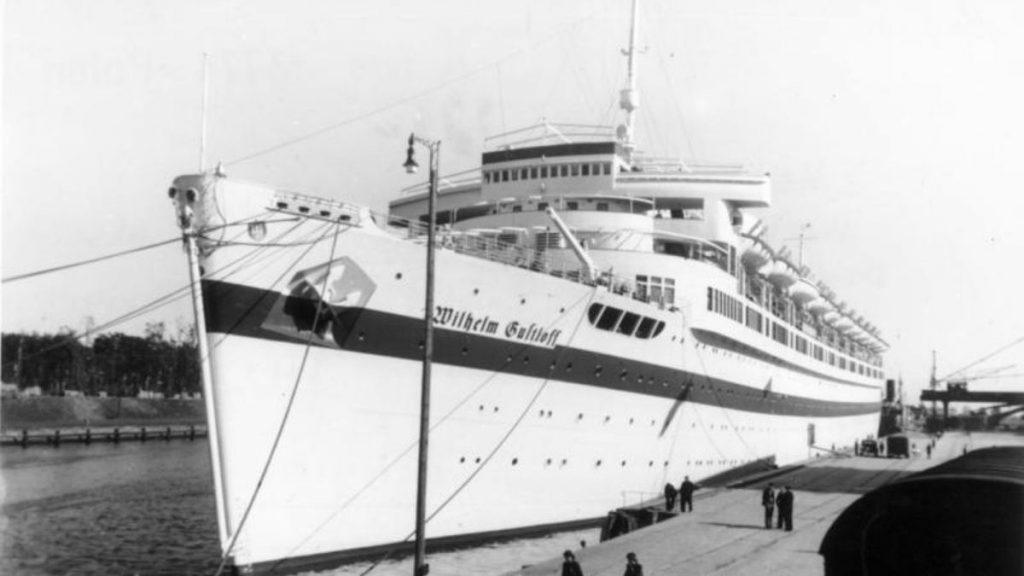On January 30, 1945, the famous German liner Wilhelm Gustloff was sunk by a Soviet submarine. This tragic event claimed the lives of approximately 9,343 people, including 5,000 children. The Wilhelm Gustloff is a cruise ship which was launched in Hamburg by the German Navy on May 5, 1937. Its name refers to the famous Nazi militant who had been assassinated in 1936. The ship transported soldiers as well as refugees from Prussia -Orientale who wanted to flee the advance of the Red Army.
However, this liner was attacked by a Soviet army submarine, the S-13, which caused the death of thousands of people. German archivist Heinz Schön claimed it was the greatest maritime disaster the world had ever seen. Other ships also suffered the same fate as the Wilhelm Gustloff such as the DS Steuben which caused 3,000 deaths, then the Goya with 15,000 victims and finally the three ships that were sunk by the Hawker Typhoons of the Royal Air Force: the Cape Arconathe Thielbeck and the deutschland. These five ships all sank in 1945.
The story of the shipwreck
As World War II gains its flank, many German citizens attempt to escape the domination of the Soviet military. As the latter set sail, the ship carrying them was sunk by the Soviet army. German citizens have even abandoned their homes since the Red Army took over the country. L’Operation Hannibal was therefore launched in order to save all citizens. The operation took place on the province of East Prussia. However, this region had already been divided between the Soviet Union and Poland.
The aim of the operation was to evacuate as many people as possible, including civilians, soldiers, weapons and other material. The former luxury liner Wilhelm Gustloff was commissioned to transport these citizens. But the problem was that the Soviet army controlled all ships going back and forth to port.
The origins of the liner
Before the war broke out, the large liner Wilhelm Gustloff had been serving as a Nazi cruise ship since 1937. The “Strength Through Joy” movement was started by the German authorities to reward loyal workers. The ship bears the name of a Nazi leader in Switzerland who had been assassinated by a Jewish student in 1936. As a result, Adolf Hitler had listed him among the ranks of immortal martyrs.
But since war broke out, the cruise ship has become a barracks. Moreover, it was not maintained for years before being refueled to evacuate civilians. The German people wanted to flee from Red Army rule, so they fled. But the Soviet army had already blocked the roads, so they decided to take to the sea to escape.
How did the rescue attempt go?
Tickets were put in place, and the German authorities checked them before the passengers embarked. But in the panic and for lack of time, the passengers were no longer dispersed in the right places. Historians say the exact number of passengers on the ship has never been identified. The ship was built for around 2,000 people. However, on January 30, the latter would have transported more than 9,000 passengers.
The ship’s crew encountered many difficulties from the outset. Especially the fear of the waters, because they feared that the shallow waters were laden with mines and the deep waters were filled with submarines. Especially since the weather forecast predicted snow and wind. Moreover, Captain Paul Vollrath had mentioned in one of his accounts that the ship had not benefited from an escort boat. According to him, a warning was issued about the presence of submarines in the area they were to cross.

What happened before the sinking?
Later in the evening of January 30, the steamer sailed serenely towards the west. When Adolf Hitler delivered his speech over the airwaves, he told everyone on board that they should all continue to support this struggle with the utmost fanaticism. Around 9 p.m., the S-13 submarine led by Commander Alexandre Marinesko launched three torpedoes. The explosion affected the living quarters of the crew, the swimming pool where the members of the female naval auxiliary were located and the engine room which housed thousands of civilians.
The life rafts were full. Survivors fought to the death trying to climb into the canoes. According to Horst Woit, a young survivor, people were hitting each other and many died trying to board the rafts. Within an hour of the bombardment, the ship completely sank in the sea. No rescue was possible as surrounding ships faced the same problem. The next day, the sea was filled with corpses including children and women. Of all the passengers, only about 1,000 survived.
To go further, also discover 10 things you probably didn’t know about the Titanic, the most famous maritime disaster.
[related_posts_by_tax taxonomies=”post_tag”]
The post Shedding light on the greatest maritime tragedy in history which claimed thousands of lives appeared first on Gamingsym.
